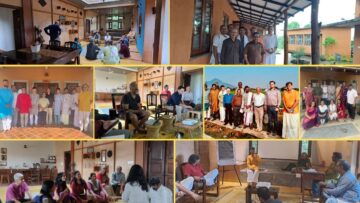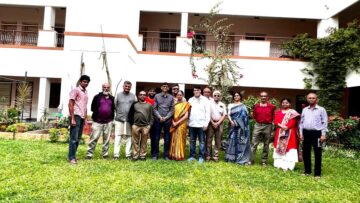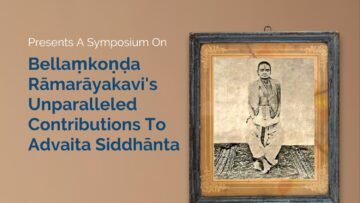Sanatana Dharma encompasses a rich tapestry of philosophical, spiritual, and ritualistic traditions. Central to our philosophy is the concept of duty (dharma) and the pursuit of a righteous way of living. The Panchamahayajnas, form an integral part of these duties, providing a framework for individuals to fulfill their responsibilities towards various entities in the universe. The Panchamahayajnas are essential practices that aim to maintain a harmonious balance in the cosmic order. As we get ready for the 15th year of Gudiya Sambhrama, the temple festival in Bengaluru of the Heritage Trust, it is time to commit ourselves again to these yajnas.
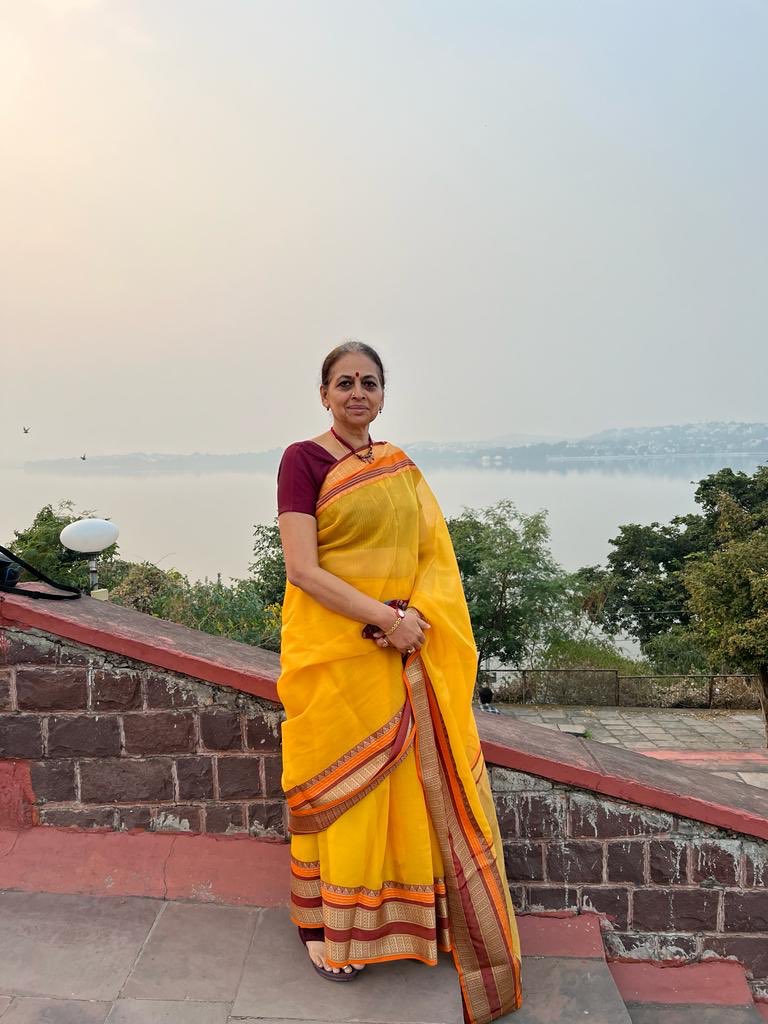
Smt Vijayalakshmi Vijayakumar, Founder Trustee of Heritage, says ours is a culture to reckon with, understand and practice, a very important part of which are the Panchamahayagnas. According to the late scholar R L Kashyap, there is no easy English translation of the word Yagna, and sacrifice, which is commonly used as an equivalent has an element of sorrow in it. He defines yajna as: A sequence of sacred actions to invoke the presence of supraphysical cosmic powers such as the mystic fire (Agni) and the mystical wind (Vayu).
“Followers of Sanathan Dharma have protected, cultivated, nurtured and live this tradition of panchamaha yajna. We recognize our place within the larger scheme of things. Much happiness comes from relating with all beings with dharma, sensitivity, contribution and not taking anything for granted. Hence the Pancha-mahayajna are our five sacred duties – our daily acknowledgement and grateful offering for what we have been blessed with. Based on the principle of reciprocity, we contribute to these relationships because of a rnam, a sacred debt. We contribute as per our understanding and capacity, yatha mati, yatha shakti,” says Smt Vijayalakshmi.
The temple festival integrates all aspects of a yajna, both for inner and outer cleansing and transformation. No yajna is complete without offerings to humans, animals, birds and plants. All yajnas use the mantras in the four Vedas – Rig Veda, Yajur Veda, Sama Veda and Atharva Veda. Details of actions are contained in the books of a much later period, maybe 500 BE, known as the grhya sutras. “But the final authority is the lineage of the priests. Each primary priest dealing with yajna performance has written or oral notes handed from generation to generation,” says Dr Kashyap.
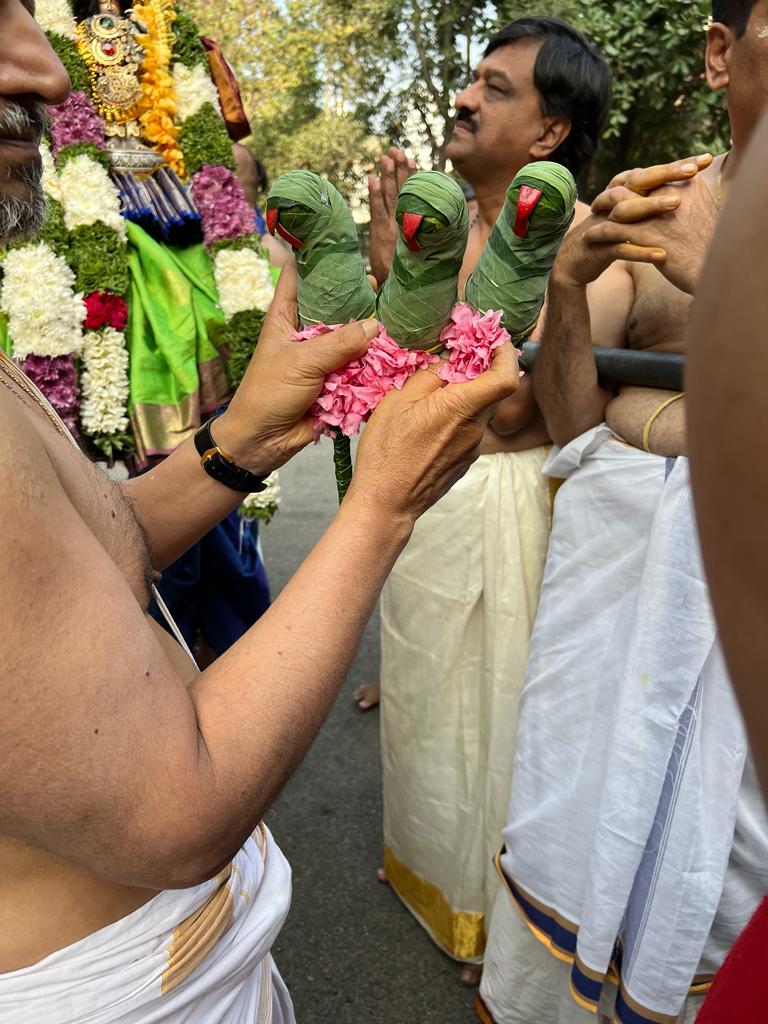
The Rig Veda states that the yajna is the “navel of the cosmos” – vishvasya bhuvanasya nabhuh. Agni Deva is called upon to perform the rite. According to the Rig Veda, we humans are able to perform any action only because of the assistance we get from the Devas. The Bhagavad Gita mentions yajnas by their names and objectives – to obtain material objects, obtain knowledge, for self study and so on. And for this humans owe gratitude to our Devas, forefathers and all the creatures on this earth which sustain our lives.
The temple is very central to all of these activities, as in these sacred spaces, these rituals have been observed without a break over millennia. Even as outer structures were destroyed by cruel invasions, the priests and bhaktas kept the flame alive. Agni, the sacred fire, must be kept burning throughout our lives. The brahmacharin has to perform samidadhana every day. After marriage, with Agni as witness, he becomes a grhastha and has to perform aupasana in the fire. For the vanaprastha there is a sacred fire called kaksagni. The sannyasin has no Agni-samskara, but he has the fire of knowledge (jnanagni) in him, says revered guru Shri Chandrashekara Sarasvati of Kanchi Matham.
In a life where we are caught up in material pursuits, Gudiya Sambhrama helps us pause and think about the many samskaras that we need to do to purify the individual self. There are almost 40 in number: garbhadhana, pumsavana, simanta, jatakarma, namakarna, annaprasana, caula, upanayana, the rites like prajapatya (Vedavratas), performed during gurukulavasa, the ritual bath on completion of Gurukula, marriage, the five mahayajnas performed everyday as a householder. In addition there are seven pakayajnas, seven haviryajnas and seven somajajnas to be conducted by a householder.
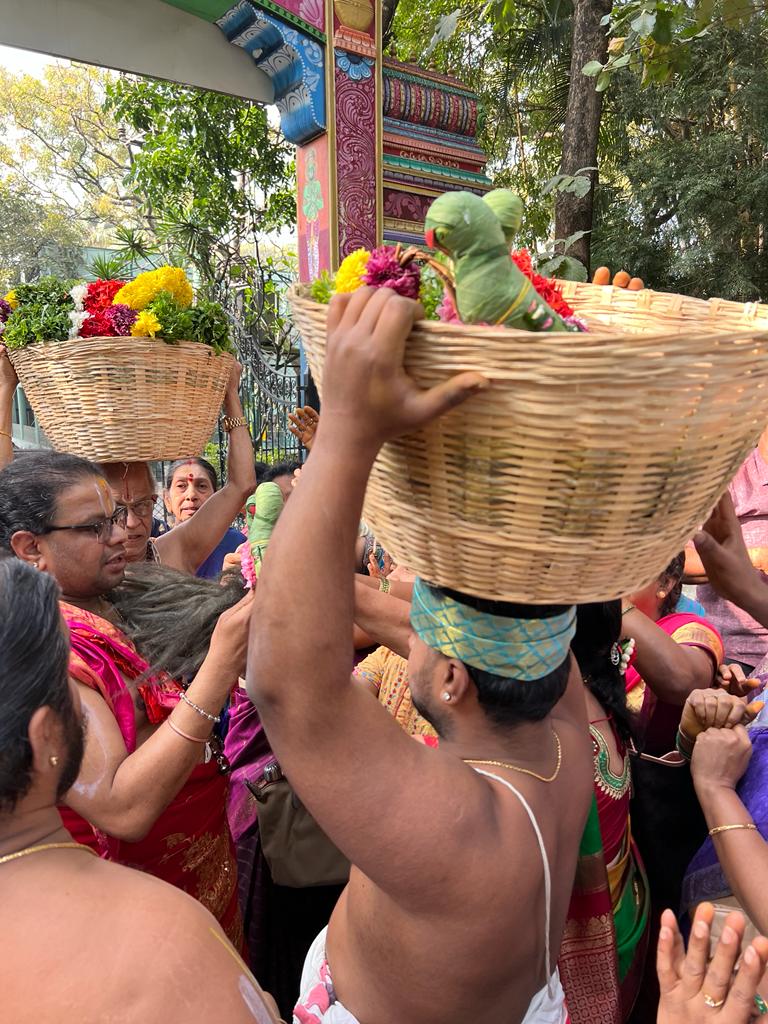
Out of the 40 samskaras, some are to be performed daily, some at certain times and some atleast once in a life time. In the first category are the pancamahayajnas. These yajnas emphasise unity with our forefathers, other living creatures and with nature and unity with Brahman. The five mahayajnas help to remind us of these unities, says Smt Vijayalakshmi. The first yajna is self-knowledge and self-study and is the foundation of all others. It is called Brahama Yajna and is an offering to Brahma. It entails a daily reading of scriptures. Rites done to the chanting of mantras, Parmacharya of Kanchi says, is more beneficial than those done without it, and a sacrament involving mantras is a samskara. The chanting of the Vedas, an integral part of the festival, constitutes Brahma Yajna.
The second yajna is Pitr-Yajna, an offering to one’s ancestors. Life is a continuous stream, and in Hindu philosophy, says Dr Kashyap, there is no generation gap. He quotes the Rig Veda
“the Pitri-s (ancient forefathers) are invisible in tapas (1),
They have gone to the world of the Sun (svar) (2)
Tapasya ye anadhrshyah (1) tapas ate svaryayah (2)
This is common in different cultures and Dr Kashyap quotes Plato who exhorts us not to forget the “yearly tribute of respect to the dead,” and to omit “nothing that conduces to a perpetual remembrance of them.” But it is only our culture that emphasies ancestral unity. Tarpana is pitryajna.
The third is Deva Yajna, offering to devas. Hinduism through its yajna framework suggests that there is reciprocal mutually satisfying relationship between man and the divine. We nourish them and they nourish us. Dr Kashyap says, “We strengthen and increase their power within us by praise, adoration, remembrance, purity and in return they give us strength, joy, intelligence and immortality. Deva Yajna is in reality an offering to our own higher nature, the secret godhead within us.” The temple festival is a great symbol of how much can we do towards Deva Yajna. Between January 20th and February 11th, 2024, Gudiya Sambhrama will celebrate the theme Srishti, Sthithi, Laya covering 32 events, involving 50 visual artists, 60 performing artists and 10 scholars.
The fourth Panchamahayajana is bhuta-yajna, offering made to elements and all of creation. In traditional homes, offerings are made to Agni, to birds and to cows. Smt Vijayalakshmi, in collaboration with Vaidyagrama in Coimbatore is organizing a retreat between 9th to 14th March to experience the connection between temples and the Panchabhutas. Tatwa Tantu is a six day retreat that nurtures and rejuvenates the sense organs. It will give an understanding of the inter-connectedness of Pancha Bhutas, Temples, Vedanga Vaastu, Sangeetam, Nrityam, Shilpa Shastra, Ayurveda and Vedanga Jyothisha. It will include session on making of kumkum, vibhuti, kolams, weaving flowers, making clay Ganeshas, all of which are such an integral part of our temple rituals.
The fifth yajna is called nri-yajna which is offerings to human beings either as hospitality or offerings. It is also called athiyajna, manushyayajna or brahmamahuta. We must feed guests or give alms, offer water.
The Mahanarayana Upanishad describes the inner yajnas of humans.
“In the case of a man of knowledge (vidusha), the yajamana is his own Self (atma). His faith is his wife, his body his sacrificial fuel (idhma), his chest (amura) is his alter (vedi), his hair are the holy grass or darbai, the Vedas he has learnt his tuft of hair, his heart his sacrificial post (yupa), his desire (kama) is his clarified butter (ajyam), his anger is his animal (pashu) to be immolated, his tapa is his fire, his sense-control (dama) is his immolator (damah shamayita), his gifts his dakshina, his speech is his hotr priest, his breath (prana) is his udgatr priest, his sight is his adhvaryu priest, his mind his Brahman priest, his hearing his agnidha priest, so long as he is born (dhriyate), it is his consecration (diksha)…and finally in the end, his sattra; death is his the avabhrtha or completion of his sacrifice.”
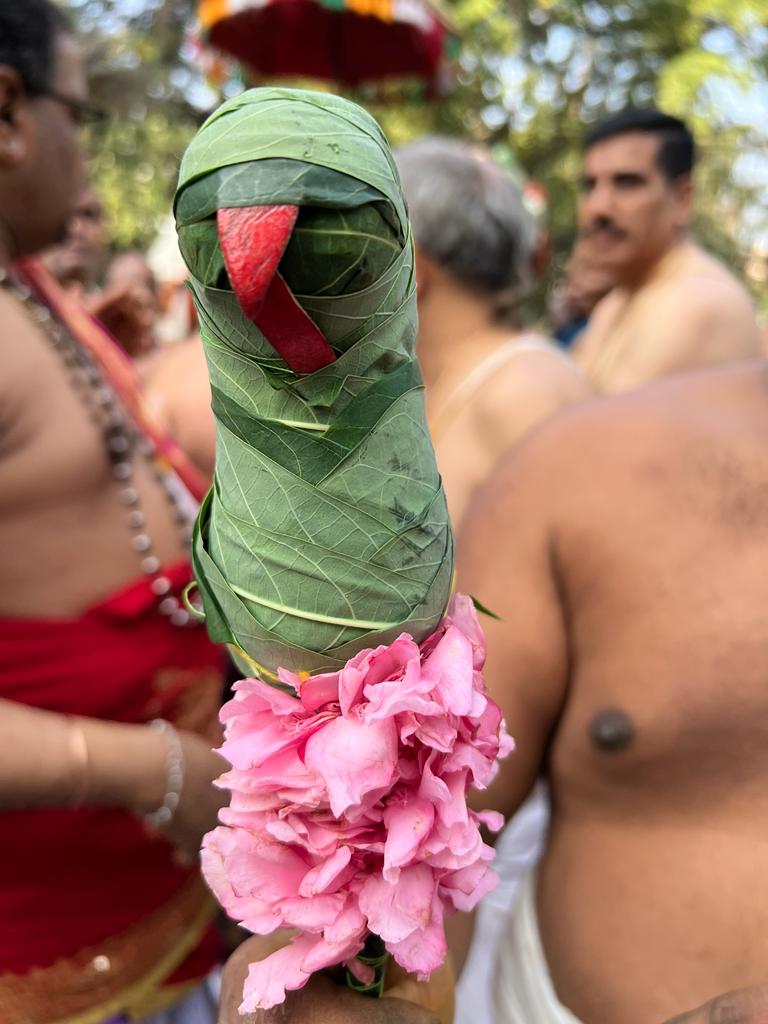
Gudiya Sambhrama, the annual temple festival, started in 2010 as a celebration of our Dharma in temple venues. “As a beginning and a small attempt to bring in more activities in the temple we started with having dance and music concerts since art attracts people, and our arts are all divinity centered. Non temple goers also have started coming because of the art and of course once they do come to the temple the atmosphere makes them honour the gods. Organizers, artists and audience are all honouring our ancestors who have created this legacy of art and temple culture,” says Smt Vijayalakshmi.
The festival is always thematic, some themes have been Sacred Trees, Sacred animals and Divine Vahanas, Sacred Mountains, Rivers, sacred sound and even Bhumi Devi. Saplings are planted in temples that have the space. Mementos include tulasi plants or puja flowers yielding plants.
Let us pledge to support temples, temple festivals and undertake our Panchamahayajnas daily. The Gudiya Sambhrama Festival details are available at: www.heritageparampara.org.





